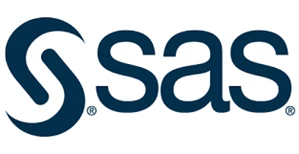ノーコードでクラウド上のデータとの連携を実現。
詳細はこちら →PCA Accounting ODBC Driver の30日間無償トライアルをダウンロード
30日間の無償トライアルへ製品の詳細
PCA クラウド会計 ODBC ドライバーは、ODBC 接続をサポートする任意のアプリケーション からライブなPCA クラウド会計データに直接接続できる強力なツールです。標準のODBC ドライバー インタフェースを使用して、データベースのようにPCA クラウド会計にアクセスし、顧客、商品、伝票などの読み出し、書き込み、および更新を実行できます。

CData


こんにちは!ドライバー周りのヘルプドキュメントを担当している古川です。
SAS は、高度なアナリティクス、多変量解析、BI、データ管理、予測分析のためのソフトウェアです。SAS とCData ODBC Driver for PCAAccounting を合わせて使うことで、SAS からリアルタイムPCA Accounting データへデータベースライクにアクセスできるようになり、レポーティング、分析能力を向上できます。本記事では、SAS でPCA Accounting のライブラリを作成し、リアルタイムPCA Accounting に基づいたシンプルなレポートを作成します。
CData ODBC ドライバーは、ドライバーに組み込まれた最適化されたデータ処理により、SAS でリアルタイムPCA Accounting データを送受信する場合に圧倒的なパフォーマンスを提供します。SAS からPCA Accounting に複雑なSQL クエリを発行すると、ドライバーはフィルタや集計などのサポートされているSQL 操作をPCA Accounting に直接プッシュし、組み込みSQL エンジンを利用して、サポートされていない操作(一般的にはSQL 関数とJOIN 操作)をクライアント側で処理します。組み込みの動的メタデータクエリを使用すると、SAS でPCA Accounting を簡単にビジュアライズおよび分析できます。
CData ODBC ドライバは、以下のような特徴を持ったリアルタイムデータ連携ソリューションです。
CData ODBC ドライバでは、1.データソースとしてPCA Accounting の接続を設定、2.SAS 側でODBC Driver との接続を設定、という2つのステップだけでデータソースに接続できます。以下に具体的な設定手順を説明します。
まずは、本記事右側のサイドバーからPCAAccounting ODBC Driver の無償トライアルをダウンロード・インストールしてください。30日間無償で、製品版の全機能が使用できます。
以下は、PCA Accounting に接続するための情報と、Windows およびLinux 環境でDSN を構成するためのステップです。
PCA クラウド会計DX では、OAuth 2 認証標準を使います。
ユーザー資格情報の接続プロパティを設定せずに接続できます。接続に最小限必要な接続プロパティは、次のとおりです。
接続すると、CData 製品はデフォルトブラウザでPCA Accounting OAuth エンドポイントを開きます。ログインして、CData 製品にアクセス許可を与えます。CData 製品がOAuth プロセスを完了します。
ヘッドレスマシンの認証など、他のOAuth 認証フローについては、ヘルプドキュメントの「OAuth 認証の使用」を参照してください。
DSN を構成する際に、Max Rows プロパティを定めることも可能です。これによって返される行数を制限するため、ビジュアライゼーション・レポートのデザイン時のパフォーマンスを向上させるのに役立ちます。
未指定の場合は、初めにODBC DSN(data source name)で接続プロパティを指定します。ドライバーのインストールの最後にアドミニストレーターが開きます。Microsoft ODBC Data Source Administrator を使用して、ODBC DSN を作成および構成できます。
Linux 環境にCData ODBC Driver for PCAAccounting をインストールする場合、ドライバーのインストールによりシステムDSN が事前定義されます。システムデータソースファイル(/etc/odbc.ini) を編集し、必要な接続プロパティを定義することで、DSN を変更できます。
[CData PCAAccounting Sys]
Driver = CData ODBC Driver for PCAAccounting
Description = My Description
OAuthClientId = MyOAuthClientId
OAuthClientSecret = MyOAuthClientSecret
CallbackURL = http://localhost:33333
ProductCode = MyProductCode
ApiVersion = V1
DataCenter = DataCenterName
DefaultDataArea = MyDefaultDataArea
InputModuleName = DefaultInputModuleName
これらの構成ファイルの使用に関する具体的な情報については、ヘルプドキュメントを参照してください。
CData ODBC Driver for PCAAccounting に基づくライブラリを追加することで、SAS でPCA Accounting に接続します。
SAS は、ローコードのポイントアンドクリッククエリツールを使用するか、PROC SQL とカスタムSQL クエリのプログラムを使うことで、データのクエリをネイティブにサポートします。SAS でビューを作成すると、ビューがクエリされるたびに定義クエリが実行されます。これは、レポート、チャート、分析について常にリアルタイムPCA Accounting データにクエリを実行することを意味します。
proc sql;
create view bugroup_view as
select
id,
name
from
odbclib.bugroup
where
Name = 'Group1';
quit;
ローカルビューを作成すると、パワフルなSAS 機能を使用してPCA Accounting データをレポート、ビジュアライズ、またはその他の方法で分析できます。PROC PRINT を使用して簡単なレポートを印刷し、PROC GCHART を使用してデータに基づいた基本的なグラフを作成しましょう。
proc print data=bugroup; title "PCA Accounting BuGroup Data"; run;
proc gchart data=bugroup;
pie id / sumvar=name
value=arrow
percent=arrow
noheading
percent=inside plabel=(height=12pt)
slice=inside value=none
name='BuGroupChart';
run;
このようにCData ODBC ドライバと併用することで、270を超えるSaaS、NoSQL データをコーディングなしで扱うことができます。30日の無償評価版が利用できますので、ぜひ自社で使っているクラウドサービスやNoSQL と合わせて活用してみてください。
CData ODBC ドライバは日本のユーザー向けに、UI の日本語化、ドキュメントの日本語化、日本語でのテクニカルサポートを提供しています。
